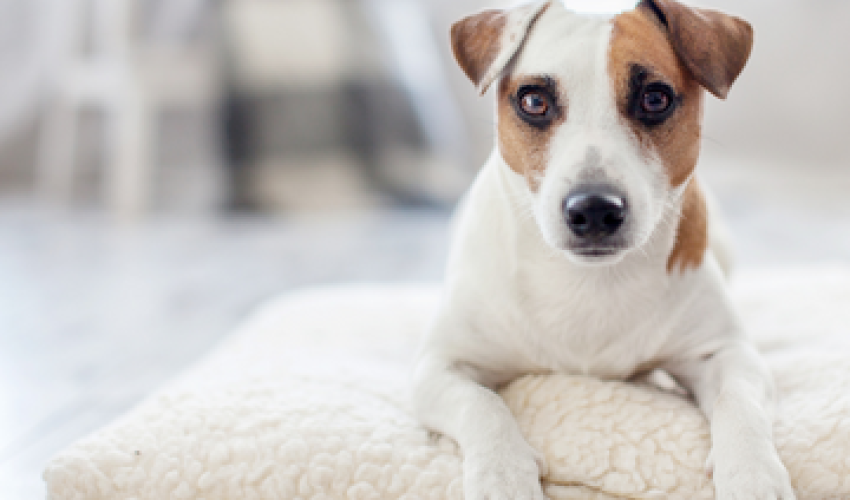
Obesity is an epidemic, and not just with humans—with dogs as well! Dogs who are overweight are at risk for a wide array of health problems, such as diabetes mellitus, hypertension, heart disease, cancer, osteoarthritis, or joint degeneration. Helping dogs get into their proper weight range is the best way to help keep them healthy and strong for as long as possible.
Our pups are happiest when they are fit, able to run and play and enjoy life without unnecessary health issues. If you think your pooch is carrying a few extra pounds (or more than a few), here are some tips for you.
Check with Your Vet
Your veterinarian can weigh your dog and tell you what his optimal weight range should be. If your dog is overweight, your vet can discuss a diet and exercise plan to help you get your pup into shape.
Here are the things that you can do to ensure that your dog stays lean and healthy.
Portion Control
Portion control is an important key to your dog's weight loss success. One convenient way to portion your dog's food is to measure the correct amount and put it in a baggie or container. You can do this for several days, or even weeks, in advance. Just pull out one baggie per day. When it's empty, your pet is done for the day. This way there is no chance of other members of the household double-feeding your pet.
Schedule Meals
Divide your dog's daily meal portion into two to four meals per day. Feed him those meals on schedule. As he gets used to the portions, the schedule will prevent him from going too long without food and keep him from getting hungry.
If your pet likes to inhale his food, slow him down by feeding him in a puzzle bowl or on a snuffle mat.
Be Firm
Dogs used to frequent meals and table scraps may raise a fuss when told "no," but you must put your foot down. It's for your dog's health and well-being.
Give Treats
You want to be firm, but not heartless. Treats are okay as long as you portion those as well. Look for low-fat treats at the pet shop, or see if your dog will eat some vegetables like carrots, green beans, or broccoli as a treat.
Exercise Your Dog
If you have a backyard dog who doesn't go on many walks, try to fit walks into your schedule. If you already bring your dog on daily walks, try to squeeze in an extra one, or make your existing walks a bit longer.
If there are multiple people in the household, make a schedule so you can take turns exercising the pup. If you and your pup live alone and you're at work most days, consider hiring a dog walker to help get him out more in the daytime.
Jogging, swimming, hiking, or treadmills are great activities for burning calories. Fetch, tug-of-war and other active games also help burn calories. If treats motivate your dog to move, try hiding them in different places and setting him loose to hunt for them.
We Can Help
The Animal Doctors have been providing outstanding veterinary service to the San Francisco Bay area for 40 years.
We truly care for our pets and their humans and want to help ensure you and your furry family member have a long, happy, healthy life together. We offer a wide variety of primary care services, including counseling in nutrition, diet, and behavioral guidance, and offer prescription diets for weight issues.
If you're worried about your dog's weight, come see us so that we can weigh him, assess the problem, and help you formulate a plan of action. Our areas of coverage include the San Francisco Peninsula, including Atherton, Cupertino, East Palo Alto, Los Altos, Los Altos Hills, Menlo Park, Mountain View, Palo Alto, Portola Valley, Redwood City, Stanford, and Woodside.


